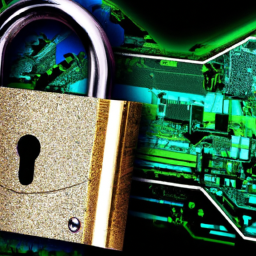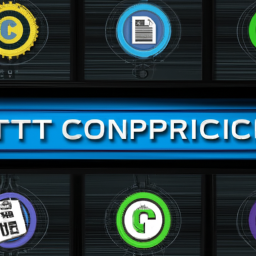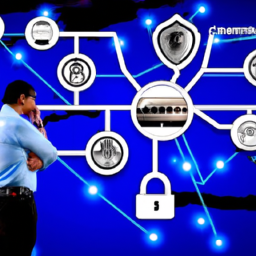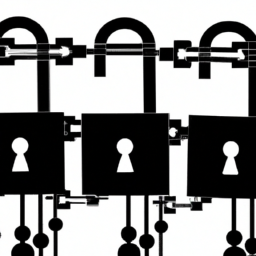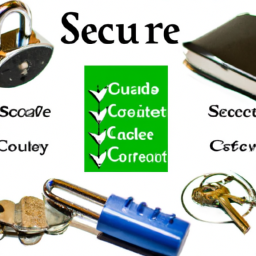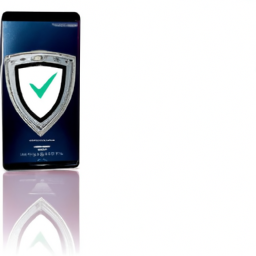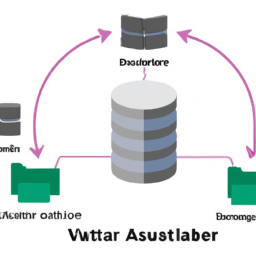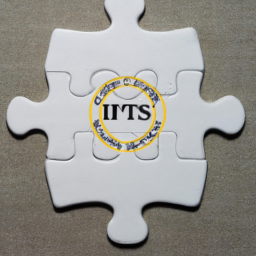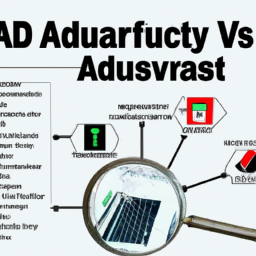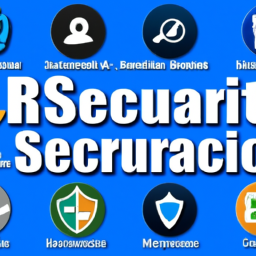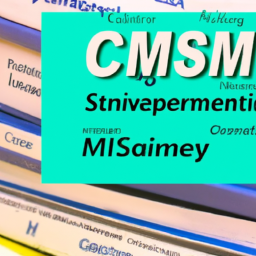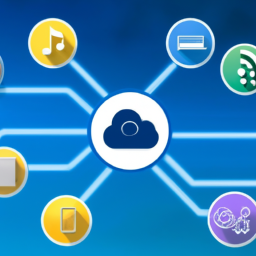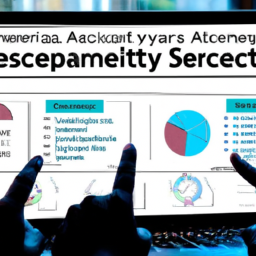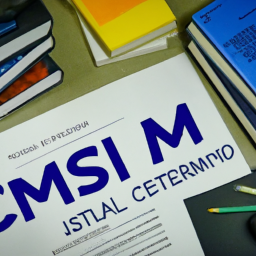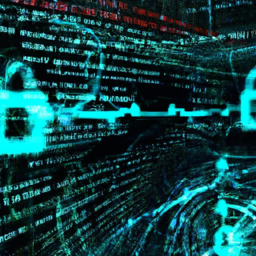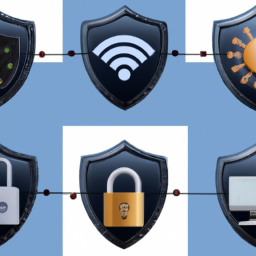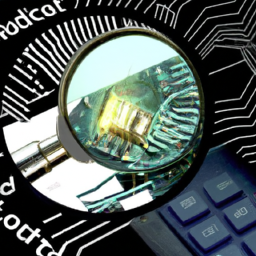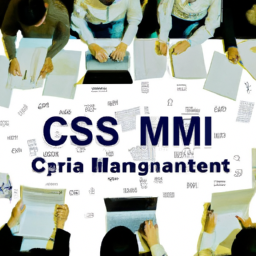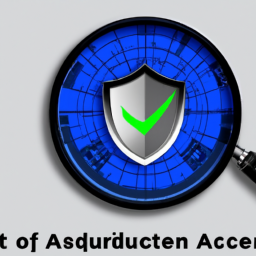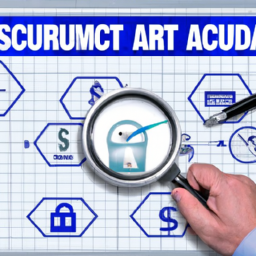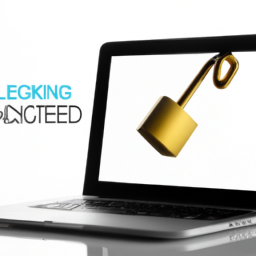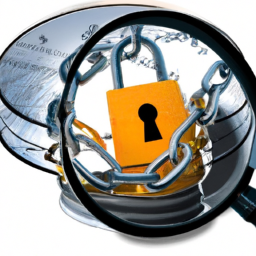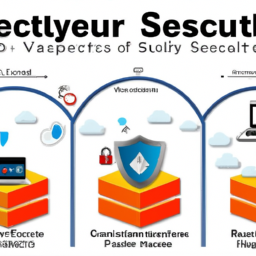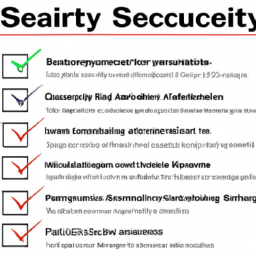Are you tired of spending sleepless nights worrying about the security of your organization’s valuable information?
Well, fear not, because in today’s digital age, building an effective Information Technology (IT) security architecture is of utmost importance.
It’s ironic how advancements in technology have simultaneously given rise to sophisticated cyber threats. But fret not, for with the right approach, you can fortify your organization’s defenses and safeguard your sensitive data.
In this article, we will guide you through the process of creating a robust IT security architecture. From identifying security requirements and objectives to implementing strong access controls, securing network infrastructure, encrypting sensitive data, and regularly updating and patching systems, we will leave no stone unturned.
Additionally, we will explore the importance of establishing incident response and recovery plans to ensure that your organization can effectively mitigate any potential risks.
So, let’s dive in and build a secure fortress for your valuable information!
Key Takeaways
- Risk assessment and threat modeling are essential for identifying security requirements and potential attacks.
- Implement strong access controls, such as role-based authentication and multi-factor authentication.
- Secure network infrastructure through network segmentation and intrusion detection.
- Encrypt sensitive data to prevent unauthorized access and meet compliance requirements.
Identify Security Requirements and Objectives
Now that you’re diving into building an effective information technology security architecture, it’s time to identify your security requirements and objectives. This is a crucial step in ensuring the protection of your organization’s valuable assets.
Begin by conducting a security risk assessment to identify potential vulnerabilities and threats. This assessment will help you understand the level of risk your organization faces and prioritize the areas that require immediate attention.
Additionally, perform threat modeling to anticipate potential attacks and develop countermeasures to mitigate them. By understanding the specific security requirements and objectives of your organization, you can tailor your security architecture to address them effectively.
Once you have identified these requirements and objectives, you can move on to the next section and implement strong access controls to further enhance the security of your IT infrastructure.
Implement Strong Access Controls
Ensure you’ve got the right people in the right positions, with access controls so tight it makes Fort Knox look like a lemonade stand.
Implementing strong access controls is crucial for building an effective information technology security architecture. Role-based authentication is a fundamental approach that assigns access privileges based on job responsibilities. This ensures that individuals only have access to the resources necessary for their role, minimizing the risk of unauthorized access.
Additionally, multi-factor authentication adds an extra layer of security by requiring users to provide multiple forms of identification, such as passwords and biometrics. By implementing these access controls, you can significantly reduce the likelihood of data breaches and unauthorized access to sensitive information.
Moving forward, a secure network infrastructure is essential to further safeguard your organization’s data and systems.
Secure Network Infrastructure
By implementing strong access controls, you can create a network infrastructure that fortifies your organization’s data and systems against potential threats.
One effective strategy to secure your network infrastructure is network segmentation. This involves dividing your network into smaller, isolated segments to limit the spread of attacks and unauthorized access. By implementing network segmentation, you can minimize the impact of a potential breach and prevent lateral movement within your network.
Another crucial aspect of securing your network infrastructure is intrusion detection. This involves deploying monitoring tools and systems that can detect and alert you to any unauthorized access attempts or suspicious activities within your network. By actively monitoring your network for potential intrusions, you can quickly identify and respond to any security incidents.
This sets the stage for the subsequent section on encrypting sensitive data, which adds an additional layer of protection to your network infrastructure.
Encrypt Sensitive Data
Implementing encryption for sensitive data adds an extra layer of security, safeguarding your network infrastructure from potential breaches and ensuring the confidentiality of critical information. Encryption transforms data into an unreadable format, making it useless to unauthorized individuals.
Here are three reasons why encrypting sensitive data is crucial for data protection and data privacy:
-
Prevent Unauthorized Access: Encryption prevents unauthorized individuals from accessing sensitive data, even if they manage to breach your network security.
-
Meet Compliance Requirements: Encrypting sensitive data helps you meet regulatory requirements and industry standards for data protection and privacy.
-
Secure Data Transmission: Encryption ensures that data remains secure while being transmitted over networks, protecting it from interception or tampering.
By encrypting sensitive data, you significantly enhance the security of your network infrastructure. However, it’s important to regularly update and patch systems to maintain the effectiveness of your security measures.
Regularly Update and Patch Systems
Regularly updating and patching systems is crucial for maintaining the security of your network infrastructure, as studies have shown that 60% of data breaches occur on systems that have not been updated with the latest security patches. System vulnerabilities are constantly being discovered, and cyber threats are evolving at a rapid pace. By regularly updating and patching your systems, you can address these vulnerabilities and protect your organization from potential attacks. Failure to do so can leave your network infrastructure exposed to hackers and increase the risk of data breaches.
To emphasize the importance of this practice, consider the following table:
| Scenario | Impact | Emotion |
|---|---|---|
| Unpatched system | Data breach | Anxiety |
| Updated system | Secure network | Relief |
| Neglected updates | System compromise | Frustration |
Regularly updating and patching systems is the first line of defense against cyber threats. It sets the foundation for a secure network infrastructure. In the subsequent section, we will explore how to establish incident response and recovery plans to further enhance your organization’s security measures.
Establish Incident Response and Recovery Plans
Ensure your organization is prepared for cyber threats by establishing incident response and recovery plans. Developing incident response procedures is crucial for effectively handling and mitigating the impacts of security incidents. These procedures should outline the necessary steps to be taken when an incident occurs, including identifying and containing the incident, investigating its cause, and implementing measures to prevent future occurrences.
Additionally, testing recovery plans is essential to ensure that your organization can swiftly recover from an incident and resume normal operations. This involves simulating various scenarios and evaluating the effectiveness of the recovery plans in place. Regularly conducting these tests helps identify any weaknesses or gaps in the plans, allowing for necessary adjustments and improvements.
By establishing incident response and recovery plans and regularly testing them, your organization can minimize the potential damages caused by cyber threats and maintain the security of your information technology infrastructure.
Frequently Asked Questions
How can I ensure that my organization’s security requirements and objectives align with industry best practices?
To align your organization’s security requirements and objectives with industry best practices, it’s crucial to ensure compliance with regulatory requirements. This involves conducting a comprehensive analysis of your organization’s security needs and comparing them to industry standards.
By identifying any gaps or areas of improvement, you can prioritize necessary changes and implement controls to align with industry best practices. Regular assessments and audits should be conducted to measure and maintain compliance with these standards.
What are some common challenges faced when implementing strong access controls, and how can they be overcome?
Implementing effective access controls can be challenging, but it’s crucial for protecting your organization’s data. One interesting statistic is that 81% of data breaches are caused by weak or stolen passwords.
To overcome access control challenges, you should first conduct a thorough assessment of your organization’s access needs. Then, implement a robust authentication system, such as two-factor authentication, to enhance security.
Regularly review and update access permissions to ensure they align with your organization’s changing needs and industry best practices.
What are the key considerations when securing a network infrastructure, and how can these be effectively addressed?
When securing a network infrastructure, key considerations include network segmentation and threat intelligence.
Network segmentation involves dividing a network into smaller segments to limit the impact of a potential breach. This can be achieved by implementing firewalls and access controls to control traffic flow.
Threat intelligence involves gathering and analyzing information about potential threats to the network. This can be done by utilizing advanced security tools and monitoring systems to detect and respond to any malicious activity.
What are the different encryption methods available for protecting sensitive data, and how can organizations determine the most suitable option for their needs?
When it comes to protecting sensitive data, organizations have several encryption methods to choose from. Some may argue that determining the most suitable option can be complex and time-consuming. However, by thoroughly analyzing the different encryption methods available and considering factors such as data sensitivity, regulatory requirements, and scalability, organizations can identify the most appropriate option.
This analytical approach ensures that the chosen encryption method aligns with their specific needs and provides optimal data protection.
What are the recommended strategies for regularly updating and patching systems to maintain a high level of security, while minimizing disruption to business operations?
To minimize disruption while maintaining security, you should adopt a systematic approach to updating and patching systems. Start by conducting regular vulnerability assessments to identify any weaknesses.
Develop a patch management policy that outlines the process for testing and deploying patches. Prioritize critical patches and schedule them during non-peak hours to minimize business impact.
Implement automated patching tools and establish a rollback plan in case of any issues. Regularly communicate with stakeholders to ensure awareness and cooperation throughout the process.
Conclusion
In conclusion, constructing a comprehensive and capable information technology security architecture is crucial for safeguarding your sensitive data.
By identifying security requirements and objectives, implementing strong access controls, and securing your network infrastructure, you can fortify your defenses against potential threats.
Encrypting sensitive data adds an extra layer of protection, while regularly updating and patching systems ensures that vulnerabilities are minimized.
Lastly, establishing incident response and recovery plans enables swift and effective action in the face of cyber incidents.
Remember, a robust security architecture is the key to safeguarding your valuable information.




